The federal battery rebate has triggered a huge surge of interest in solar panels, which are required to qualify for the government incentive. Some people are getting solar for the first time, while others are upgrading their existing systems. Here’s the best solar to pair with a home battery.
Under the federal government’s Cheaper Home Batteries Program, which begins July 1, batteries must be connected to a new or existing solar system.
For people without solar who want to get the battery rebate, they will need to buy a new solar energy system to secure the battery incentive.
It might even make sense to get solar with a hybrid inverter before investing in a battery, to see what impact it has on your bills and better inform what size home battery you need to get. It is particularly important to get the battery size correct from the get go, since the rebate can only apply to one battery install or upgrade per property.
What About Households That Already Have Solar?
An estimated 15 million solar panels are expected to be chucked out due to the battery rebate. In many cases there is no reason to ditch perfectly good solar. But there are some situations where expanding or replacing the existing system is advisable:
- Size: the existing solar system isn’t big enough to meet the household’s electricity consumption and also regularly fill a battery. In many cases a smaller 5kW solar array won’t do the trick, and larger solar arrays at 7kW and above improve the payback time of batteries;
- Future proofing: Perhaps you’re planning to get an EV one day for instance, which will increase your electricity consumption, along with the size of solar system needed to also fill a battery;
- Out-of-date: The system has reached its end of life and is heavily degraded, or no longer complies with current rules and regulations, meaning it will need to be upgraded or replaced in order to add a battery.
The Best Solar To Get Ahead Of The Battery Rebate
The wrong size of solar panel array isn’t the only thing that can blow out the payback time on a battery – so too can the solar panel brand. Getting a dodgy solar product that fails to generate the promised amount of power, degrades quickly or is riddled with issues can derail your battery plans.
Every year, we survey our installers for their recommendations of the best solar panels as part of our Installers’ Choice Awards. Here are the top three brands 161 of our installers recommended in 2025.
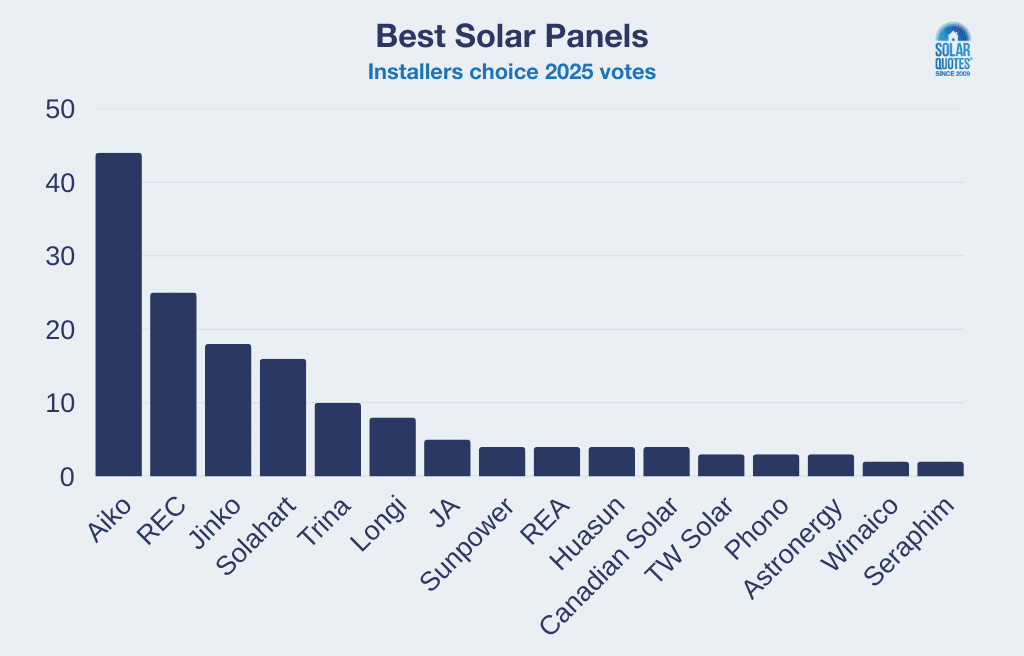
Aiko Solar was the most highly recommended brand by our surveyed installers.
Aiko Solar: Our Installers’ Choice
In first place is Aiko Solar, which secured 27% of the vote despite only having launched in Australia in 2024. Aiko has quickly won installers over with its Neostar range of panels, which offer comparable performance to premium brands at a much more affordable price point. Neostar panels feature the best efficiency rating going around, at up to 23.6%.
Customer reviews: People who purchase Aiko have largely been happy with their new battery, with Aiko enjoying a superb 4.9 out of 5 star rating from over 140 reviews.
Price: Aiko’s flagship Neostar 2S 455W should set you back $159 a panel, or $0.36 per watt. A 10kW solar panel array big enough to comfortably charge a battery should set you back roughly $9,000-$11,000, including a premium inverter.
Point of caution: it is worth being sceptical about some of the more audacious marketing claims Aiko makes about panel performance in shade, as covered in this video.
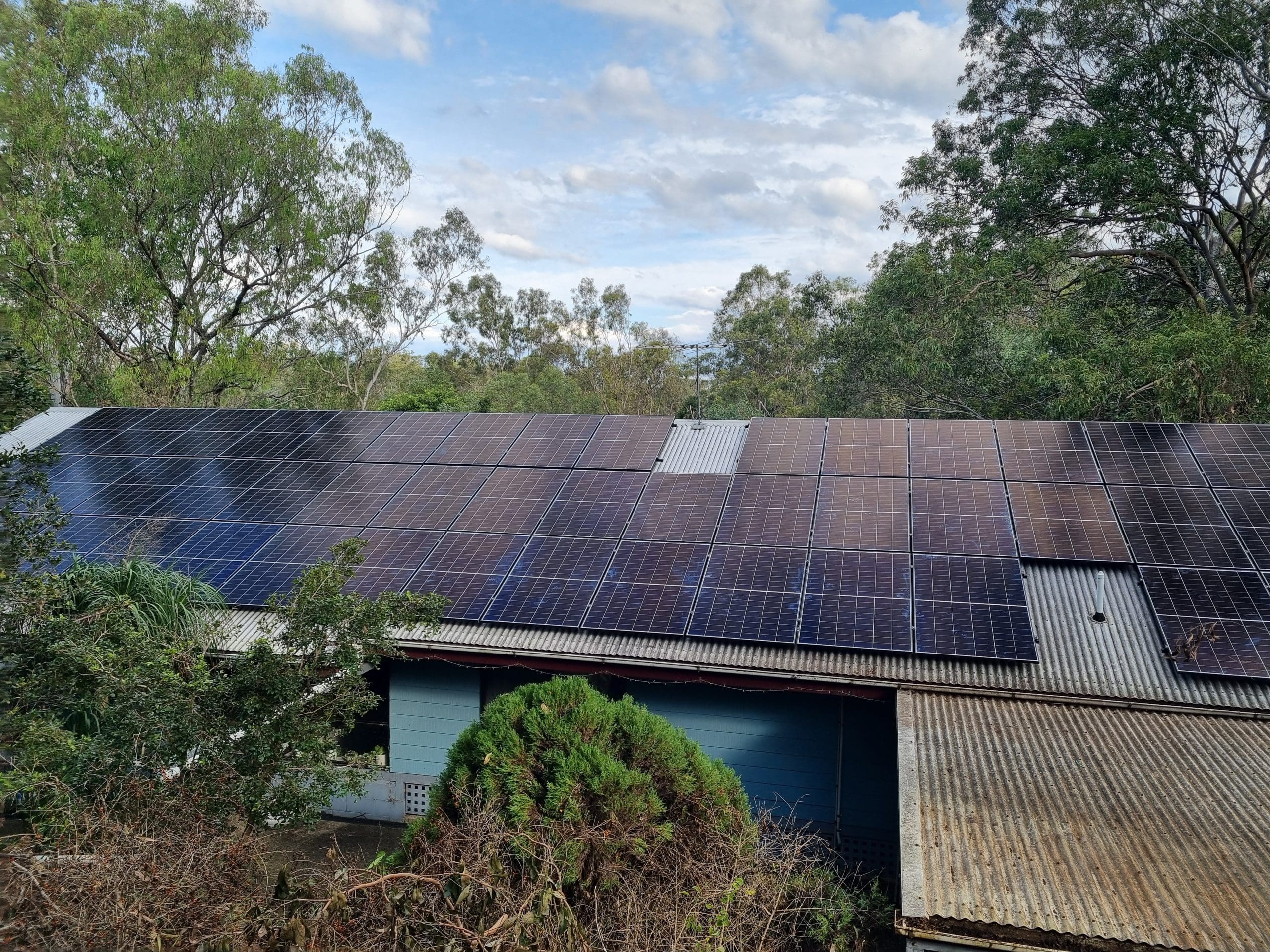
Aiko solar panels installed by Queensland-based installers Springers Solar.
REC: The Best Premium Panels
In second place is REC, which secured 16% of the vote. REC are rated by our installers for backing up their high price point with top-of-the-line performance. REC panels degrade more slowly than their competition, and handle extreme heat better than most.
Customer reviews: Australian customers seem to think REC is worth paying for, with the brand boasting a stellar 4.9 out of 5 star rating from over a thousand reviews.
Price: REC’s flagship Alpha Pure RX 470W should cost $290 a panel, or $0.61 per watt. A 10kW system with a premium inverter should set you back somewhere in the range of $12,000-$14,000.
Point of caution: the difference between premium and (some) budget brands is smaller than ever. You might get better bang for your buck by investing in more panels from a cheaper brand or a higher-end battery or inverter.
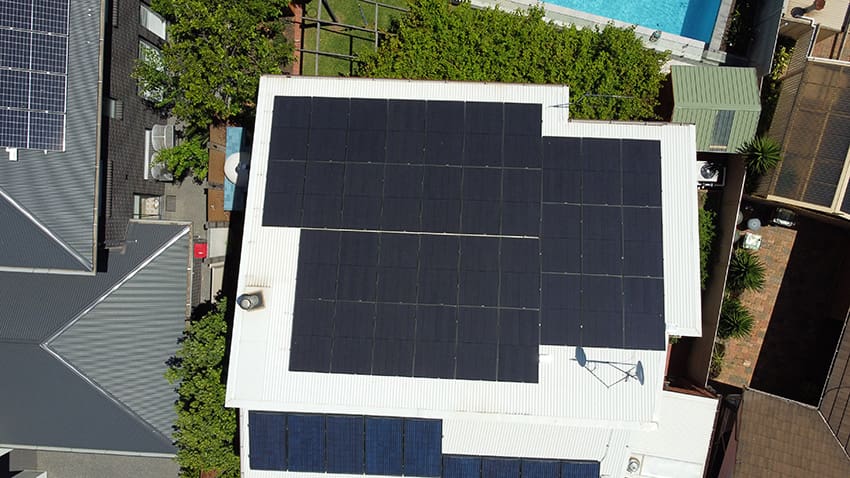
SolarQuotes founder Finn Peacock liked REC panels so much that he installed them on his own roof.
Jinko Solar: The Best Budget Panels
Coming in with 11% of the vote, Jinko Solar has long been a favourite in Australia, and is one of those budget brands that is close to matching its more expensive competition.
Customer Reviews: Jinko’s reputation among Australians has stood the test of time, with an average rating of 4.8 out of 5 from over 3900 reviews.
Price: Jinko’s flagship Tiger Neo 440W should cost $125 per panel, or $0.29 per watt. A 10kW system coupled with a premium inverter should set you back somewhere in the range of $9,000-$11,000.
Point of caution: as a budget brand, Jinko panels are sometimes used by disreputable installers who might cut corners on the job, or pair them with a dodgy battery that fails to match Jinko’s panel performance. Check the reviews of an installer before locking them in, rather than just relying on Jinko’s reputation.
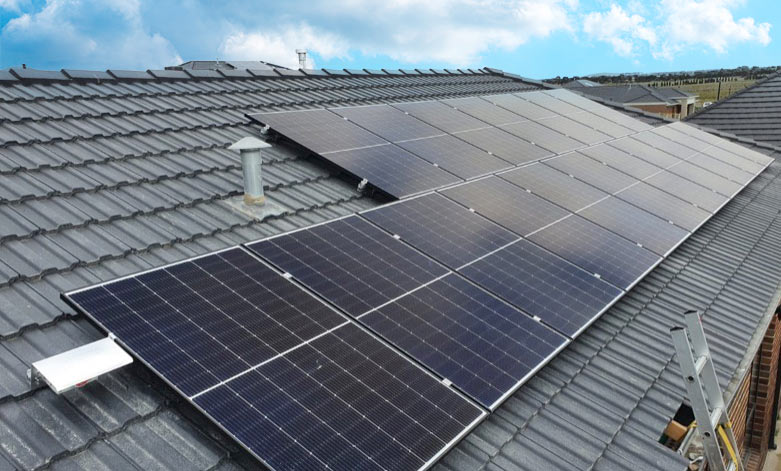
Jinko Panels installed by JWS Electrical Services
How To Compare Solar Panel Brands Yourself
Want to look into one of the above brands further, or investigate another option entirely? To compare solar panel brands yourself, use our comparison table. To dig into what size system best suits your needs, try our solar and battery calculator. And for the best batteries to pair with your solar under the rebate, read this guide.

 RSS - Posts
RSS - Posts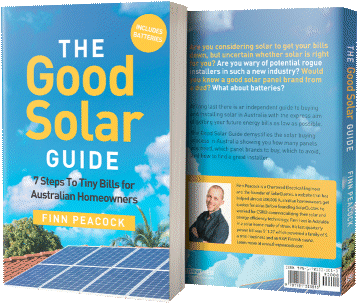


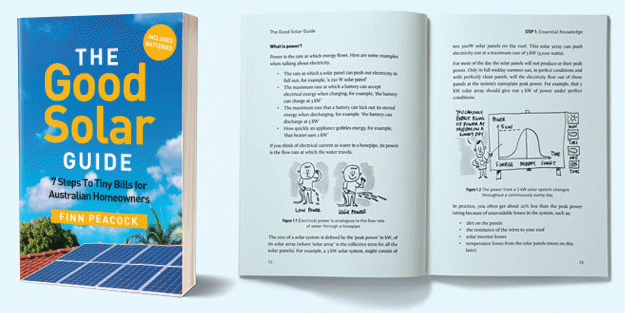
Your “panels wont cut it, you will have to replace them” has long been the cry of the installer looking to upsell to customers.
An honest installer might say, you need more generation / panels, and those old ones are in the prime location, do you want to replace them or move them elsewhere on your roof? You might have no choice if you already have a small roof full of old panels, but it should be a conversation and a recommendation, not a “you have to”
Hi Andrew,
We have written about when and how to upgrade solar. As a new industry there has been rapid change to acompany it’s rapid uptake so many systems are showing their age.
https://www.solarquotes.com.au/blog/upgrade-modern-solar/
Half a paragraph of what you write concerns me, “…or no longer complies with current rules and regulations, meaning it will need to be upgraded or replaced in order to add a battery. ”
To which rules and regulations are you referring?
Would my 7 year old system not qualify due to non compliance? Would my 2 year old system be ok? What work would be needed to be eligible for the scheme?
Hi Ian,
Compliance with network rules is going to be an issue going forward.
We sometimes need to keep a lid on solar production and at other times moderate demand. So inverters, air conditioners & EV chargers have either new CSIP-Aus or old DRM protocols to control them.
If you have old systems we have written about upgrades but making them meet current rules may mean using a CatchControl or new inverter.
Some details here:
https://www.solarquotes.com.au/blog/flexible-exports-e-waste/
The worry was more so the electrical installation standards and if current cecc rules must apply to the whole system. The 7 year old system is a SolarEdge that only curtails production in a grid overvoltage condition. The upgrade would involve installing a current SE Home Hub and add a SE Home Battery as soon as SE have sorted OCPP compatibility, assuming I can retain the 7 year old wiring. I would not consider a battery if it meant wasting a functioning PV system.
Hi Max, good to see that word of caution about some of the advertising claims of the Aiko panels.
I have to wonder how these have come to be “Installers Choice” and exactly what weight we should get preference of installer, particularly considering the knowledge and professionalism of those I received my 3 quotes from on 2 separate installs.
They have little to no track record in Australia so jumping to the top of the recommended list does seem odd. Have to wonder what exactly makes installers recommend them. I would be genuinely interested.
Given there is a possibility an installers choice may well be swayed by financial factors, some other data might be considered.
Understand your point, but our vetting process is pretty strict when it comes to the conduct of the SQ-approved installers surveyed for this. If you’re not convinced by the opinions of installers, I’ve also linked to the customer reviews of each brand mentioned above, which are overwhelmingly positive. That includes Aiko, but time will tell if they maintain a positive reputation as long as REC and Jinko have in Australia.
Hi Matthew,
At Aiko Energy, we know trust must be earned, especially in a mature, informed market like Australia. While we’re new here, Aiko has over 16 years of R&D, 1,000+ patents, and global leadership in solar cell technology and manufacturing.
Our “Installers’ Choice” recognition wasn’t driven by advertising or incentives, it came from installers who compare performance daily and back Aiko for efficiency, reliability, and support. We are extremely proud of this recognition.
Aiko Energy Australia is a locally registered entity, with a highly experienced team. We’ve built trust not through discounts or financial incentives, but through consistent engagement with solar installers and retailers, proven product performance, and real value to customers.
Many top installers, even initially cautious ones, are now choosing Aiko. We welcome healthy scepticism and would be happy to share data, warranty info, or connect you with installers using our panels.
So, another thought.
You have to have solar to get the battery rebate.
Does your battery that attracts the rebate have to be charged by your existing solar?
Indeed could you become an “amber entrepreneur”, install what ever sized battery you could physically fit and not worry about the capability of charging it from your solar at all, charging it in free power slots on your time of use plan, selling at high times if you want to play the market, or just enjoy the free power.
Just leave your old 2kw system sit on the roof doing not much of anything if it won’t connect to the battery.
There’s a recent ABC podcast on YT, alluding to such a prospect, while concentrating on VPPs. So long as the final rebate fine print doesn’t block it, then it seems viable. As the ToU pricing is set to serve the network, your taking advantage of it would do the same, absorbing (otherwise curtailed) midday excess, and filling the evening dip. Our free will is thus guided to common good.
But as ICE vehicles become more expensive to fuel and maintain in the coming decades, EV cost benefits grow with time. Then an adequate PV array and inverter is a cheap source of free motoring. Grid batteries are being installed in great hulking lumps, and they’ll eat all the negative cost & free kWh in a few years. Big business likes money for jam, buys batteries dirt cheap, and has economies of scale. Self-generation is the only securely low-cost energy, long term, I suspect. (Solar farms generate cheaply, but distribution & retail will doubtless find ways to siphon much of the benefit.)
Here I was looking at quotes for a battery and more panels in WA with the fed and state rebate. Now that the state rebate has been cut down to almost nothing, I won’t be going ahead and will stick with my 6.6kw panels and no battery, shame 🙁
In the above article, is this;
”
What About Households That Already Have Solar?
An estimated 15 million solar panels are expected to be chucked out due to the battery rebate. In many cases there is no reason to ditch perfectly good solar. But there are some situations where expanding or replacing the existing system is advisable:
”
but, no mention appears to be made (that I could find in the article), regarding the prospect of adding new panels to an existing system.
As an example, I have 8.36kW of Jinko Tiger Pro 440W panels (19 panels), which are the limit for the GW5000-EH inverter. The system was installed August 2022. If I replace the inverter with the Sungrow SH5.0RS, which will run up to 12kW of panels, and drive up to 50kWh of BESS (2 stacks of SBH250), could new panels be added to supplement the existing ones, or, would the whole lot need to be replaced? Also, the article does not refer, regarding expansion, whether panels different to the existing panels, could be added.
Hi Bret – its actually mentioned in the part you quoted above: “expanding or replacing the existing system”. But yes this piece is focused on the best brands available today, not on the many considerations to factor in when expanding. Here’s a deeper dive into that. It’s possible to add panels different to the existing brand but this would generally result in compromised output.
As of today, 04 June 2025, the Western Australian tyrannical dictatorship that rules Australia, has eliminated the federal battery subsidy for Western Australian households.
At https://www.dcceew.gov.au/energy/programs/cheaper-home-batteries is shown that, for 2025, the estimated federal battery subsidy is 372AUD per kWh, for up to 50kWh, totalling up to 18600AUD in subsidy.
At https://www.wa.gov.au/organisation/energy-policy-wa/wa-residential-battery-scheme is both
“The WA Residential Battery Scheme will complement the Federal Government’s Cheaper Home Batteries Program for a combined rebate of up to $5,000 for Synergy customers and $7,500 for Horizon Power customers.” – COMBINED rebate, thus, cutting the available rebate for WA householders, from 18600AUD, to 5000, on the Shonky Westralian Inadequate Stuffup Grid;
and,
“Households will be required to participate in a Virtual Power Plant (VPP) to be eligible for the Scheme.”
NO SUCH REQUIREMENT APPLIES TO THE FEDERAL SUBSIDY!
Hi Bret,
Hyperbole aside, are you upset that tens of thousands more Western Australians will now partake of the $337million dollar WAGov budget for this scheme?
I suspect that he is more upset that a political promise made at an election has been broken and that he would now be forced to join a VPP to access a much lower subsidy than promised.